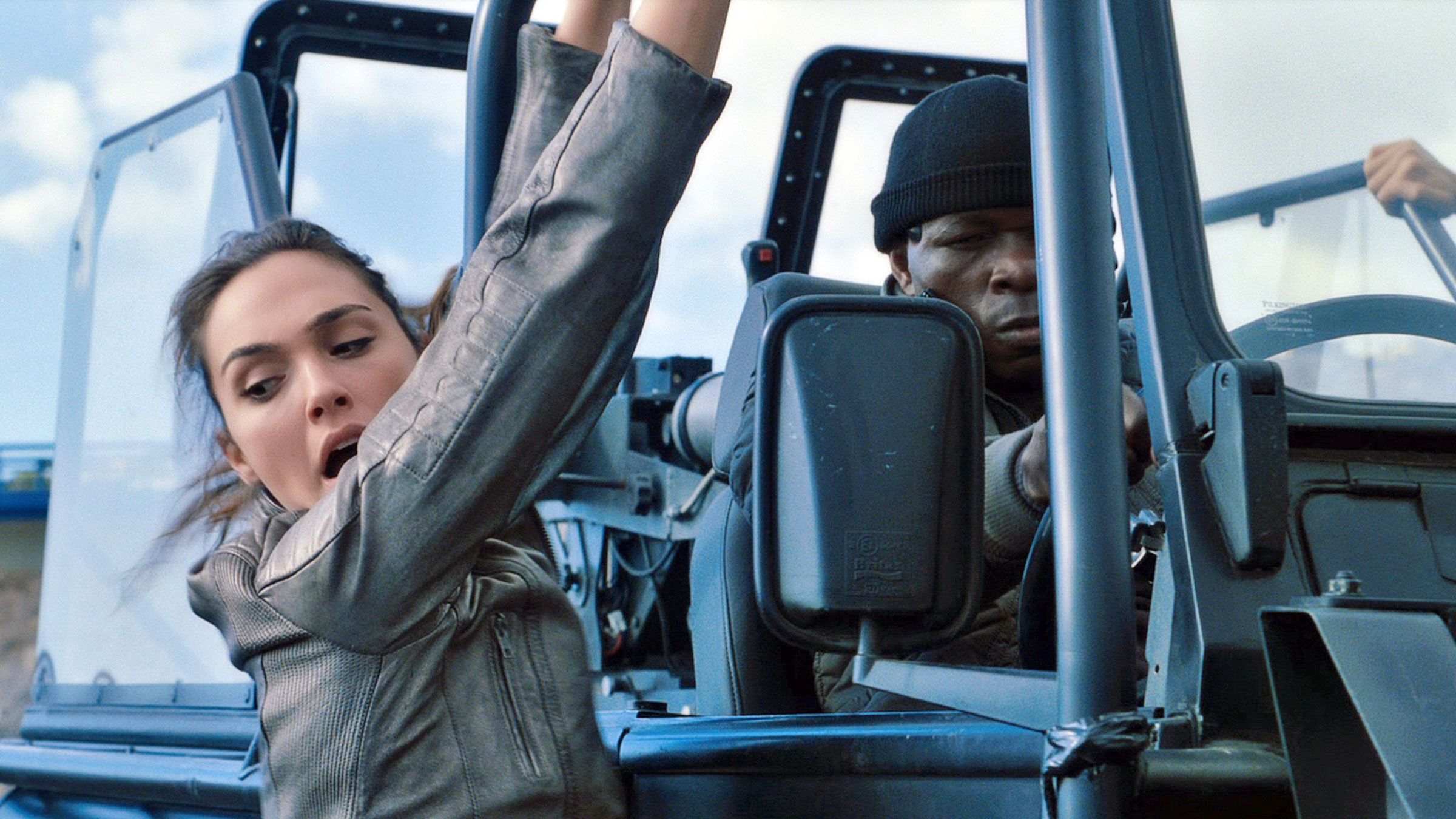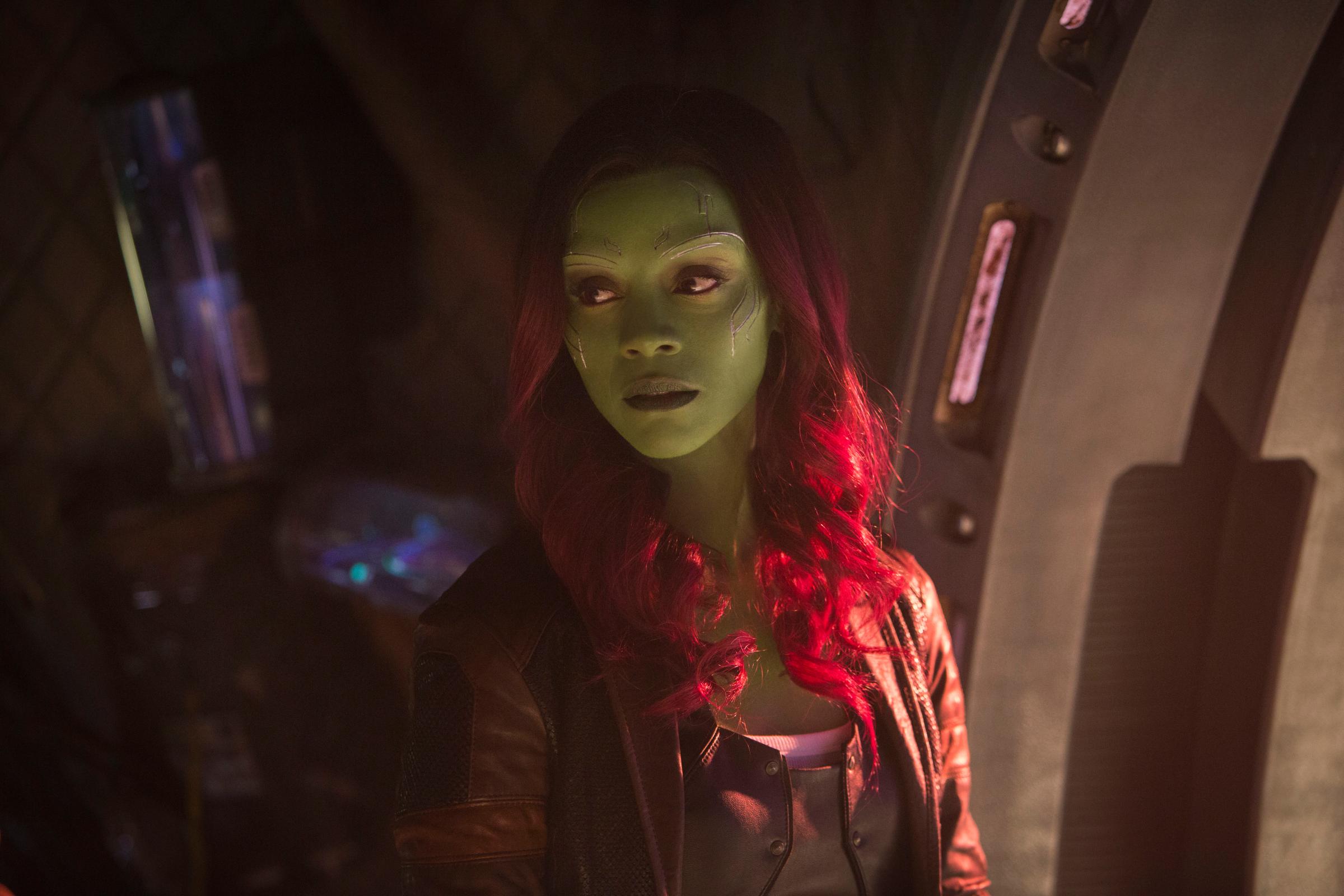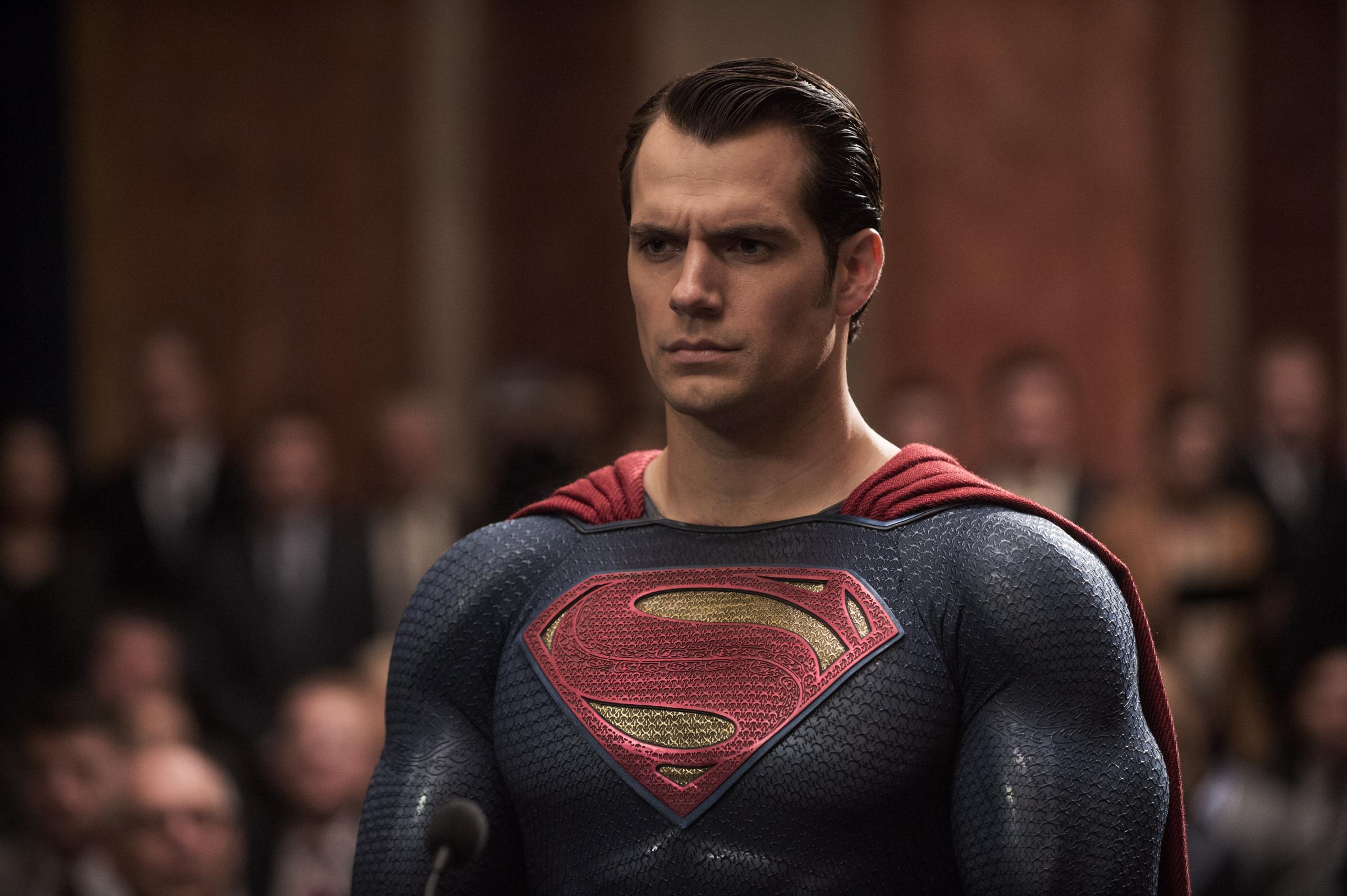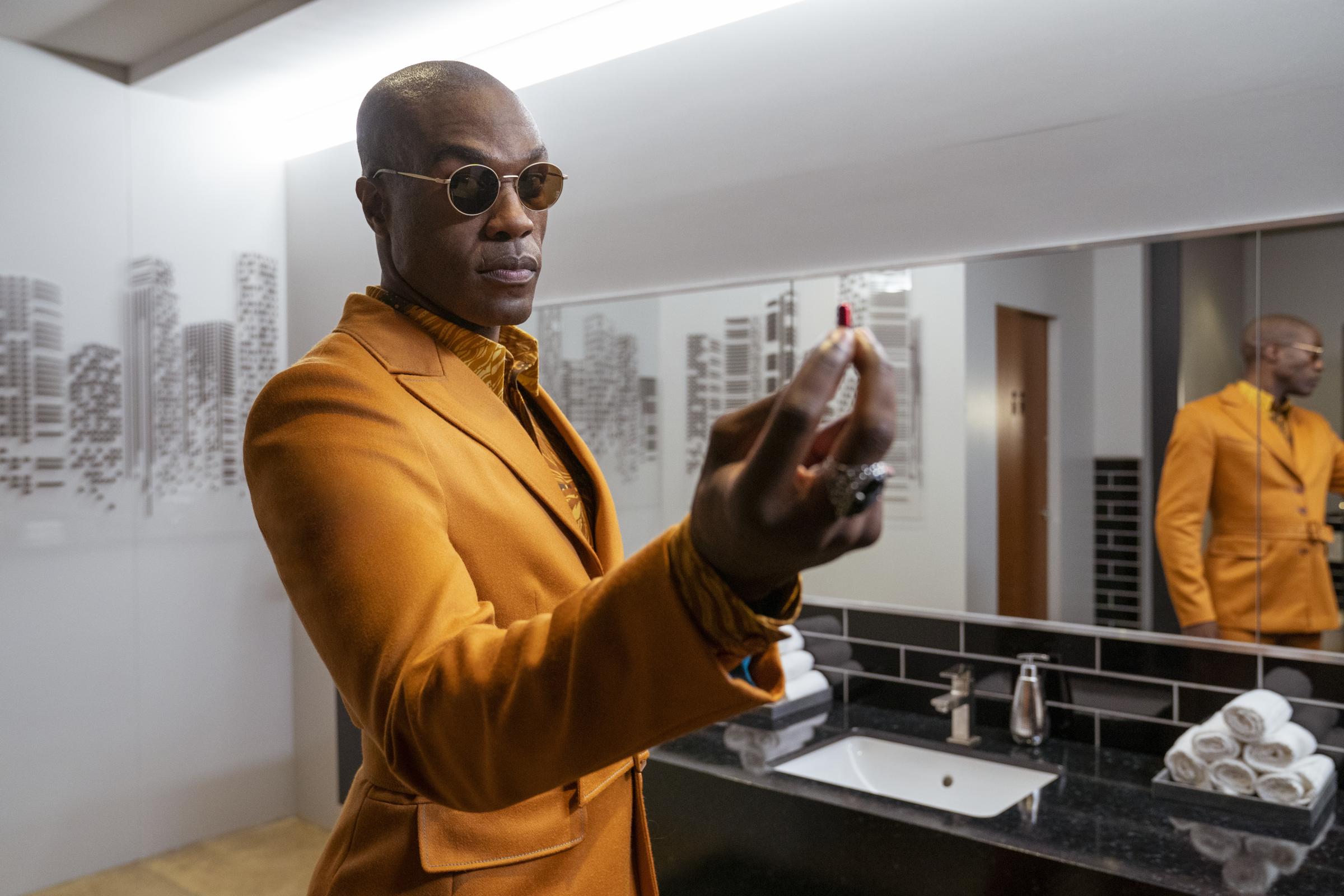
This post contains spoilers for Guardians of the Galaxy Vol. 3 and Fast X.
The end of Fast X is full of surprises. First off, there’s the revelation that this movie is the first part of a duology (or, if Vin Diesel has his way, a trilogy) that will conclude the Fast & Furious franchise. Fast X ends mid-action with a bomb about to go off and cause a dam to collapse on Diesel’s Dominic Toretto and his son. Before the movie ends, we do get a brief glimpse of Dom’s wife Letty (Michelle Rodriguez), who has spent much of the movie in a CIA black site in Antarctica with Dom’s enemy, Charlize Theron’s Cipher.
The two manage to escape and find (surprise!) Gal Gadot’s Gisele, who supposedly sacrificed her life to protect her boyfriend Han (Sung Kang) in Fast & Furious 6. She emerges from the ice in a high-tech submarine to give Letty and Cipher a lift back to civilization. Gisele waves happily from the hatch but doesn’t say anything. Audiences will have to wait for Fast 11 to find out how, exactly, she survived jumping off an airplane in the sixth movie.
Read More: Breaking Down the Very Complicated Fast & Furious Family Tree
If you’re rolling your eyes at the fact that Gisele is back from the dead, know that in the Fast franchise, everyone is immortal. Diesel and his crew have been at this resurrection business for a long time. Letty was thrown from a car explosion and left for dead in the fourth movie, The Fast and the Furious, but popped back up in the post-credits scene for Fast Five. That return was somewhat plausible—even the soap opera-esque explanation of amnesia felt permissible because the franchise simply wasn’t the same without Rodriguez, one of the most compelling action stars working today.
But each new comeback since has seen diminishing returns. In F9, Han revealed that he somehow survived being stuck inside a car during an explosion at the end of Tokyo Drift. It turns out CIA operative Mr. Nobody (Kurt Russell) helped Han fake his death. The CIA situation also provided some explanation for why Han stayed away from his friends for so long.

But now they’re bringing back Gisele who fell off an airplane. Explaining how someone who isn’t literally Wonder Woman (in this movie, at least) can survive a fall from a moving plane onto a tarmac takes some doing. Did she have a secret parachute? Was there a giant mattress set up on the exact right spot on that endless airport runway? Perhaps more problematic, future films will have to bend over backwards to find a plausible reason for why Gisele has been hanging out in Antarctica working for Dom’s arch nemesis Cipher instead of reuniting with her lost love, Han.
Read More: Let’s Talk About the Shocking Reveals of Fast X’s Final & Mid-Credits Scene
Fast & Furious is far from the only franchise guilty of reviving the deceased. We’ve also seen beloved characters come undead in Guardians of the Galaxy, Justice League, and The Rise of Skywalker. Some explanations are better than others: Lately, they usually involve some sort of resurrection magic or an alternate universe version of a character arriving in our story from a parallel timeline. But the troubling trend in increasingly lackluster franchise films not only deprives the movie of any true stakes, it also deprioritizes compelling—dare we say rational—storytelling in order to serve Hollywood’s multi-film contract negotiations with big-name actors, even if those deals betray their characters’ fates long before we ever see them die, or come back to life, onscreen.
The resurrection trend

The Fast folks may be guilty of playing fast and loose with the finality of death. But other franchises have seriously stumbled over these plot points. Few audience members bought that Zack Snyder had actually killed off franchise star Henry Cavill’s Superman in Batman v Superman: Dawn of Justice. The character’s return in Justice League seemed so inevitable and obvious to fans that the studio announced Cavill’s comeback at San Diego Comic-Con months before Justice League’s premiere instead of waiting to spring the surprise on viewers in the theaters.
Then there’s Emperor Palpatine’s return in Star Wars: The Rise of Skywalker, a retcon of one of the most pivotal moments in cinematic history that earned little more than a “yada yada” explanation about how Palpatine was alive again because of power and he was biding his time until the finale of this series to reveal himself because of reasons. The villain’s comeback was designed to link the main character Rey (Daisy Ridley) to the two main families in the larger Star Wars saga, not to serve the actual story.
The most recent and aggravating example may be Gamora’s return to the Guardians of the Galaxy franchise. The character (played by Zoe Saldaña) was pushed off a cliff by her genocidal father Thanos in Avengers: Infinity War, only for a version of her from an earlier timeline to return to the story in Avengers: Endgame. Guardians creator James Gunn didn’t devise these plotlines for Gamora; Avengers creators Joe and Anthony Russo did. That left Gunn in the unenviable position of figuring out what to do with an out-of-time Gamora who does not remember falling in love with his main character Star-Lord (Chris Pratt) or joining the Guardians team.
As a result, Saldaña doesn’t have much to do in Guardians of the Galaxy Vol. 3 except repeatedly rebuff Star Lord’s advances. She feels more like an afterthought than a driving force in the story. Saldaña, one of the highlights of the Marvel franchise, may have been better off left for dead.
No stakes and big contracts

The most obvious problem with resurrecting the dearly departed members of your cinematic team is that it deprives the movie of stakes. If Superman is invincible, why do we care about his fight with the monster-of-the week? Audiences who become accustomed to these cheats will come to resent the implication that they should allow themselves to fall for the filmmakers’ tricks then come back for more when the next installment hits theaters.
When Dom’s brother Jakob (John Cena) sacrifices himself by driving his car into a fiery explosion in the climactic chase in Fast X, the movie takes barely a moment to mourn the character. After all, he probably survived because he was secretly wearing a flame-retardant suit or rolled out of the car at the last minute or…something. Sure, Jakob may be gone for awhile. Cena is pretty busy with the Peacemaker TV series and nearly a dozen upcoming film projects. But remember, if you don’t see a body and the pay is high enough, the A-list star is probably coming back at some point. (Note that Gadot’s return to the franchise conveniently coincided with Warner Bros. scrapping plans to film Wonder Woman 3.)
Fast & Furious has pulled this trick so many times that it’s more shocking that Dwayne Johnson’s Hobbes, who is very much alive and well in the Fast universe and stars in his own spinoff Hobbes & Shaw, pops up in a Fast X post-credits scene than that Gadot has returned. Johnson and Vin Diesel have not starred in the same film for years, allegedly due to a rumored rift between the two. His return to the main franchise seemed less likely than Gisele clawing her way out of a grave. (Though Johnson and Diesel notably do not share a scene and the cameo may have existed merely to set up some future Hobbes & Shaw movie.)
It’s hard not to think about these deaths and revivals in terms of actor contract negotiations. When fans speculated about who would die and who would survive Avengers: Endgame, they based their answers on actors’ expressed desires to continue on in the franchise or not. Robert Downey Jr. ready to retire Iron Man? Officially dead. Scarlett Johansson’s lawsuit with Disney probably sealed Black Widow’s fate in the Marvel Cinematic Universe: She’s not coming back.
How to do the storyline better

This is not to say that all dead characters should stay dead always. If it serves a narrative purpose in the story, a Christ-like resurrection can be thematically resonant and drive drama. Think: Gandalf leveling up from Gandalf the Gray to Gandalf the White after his death in Lord of the Rings or Neo’s mysterious return in the aptly named Matrix: Resurrections fueling the mystery of the entire film and underlining franchise themes about sacrifice.
Avatar: The Way of Water got particularly inventive when it came to finding ways to recycle actors from the original film in new ways: Sigourney Weaver’s scientist Grace dies in the first film, but the actor returned to play a motion-capture version of a Na’vi teen in the second movie with mysterious circumstances surrounding her birth. Is she Grace resurrected? Is she the daughter of the goddess Eywa? Such questions will no doubt play a major role in the next three Avatar films.
Not all creative solutions work: The return of Steve in Wonder Woman 1984 involved Chris Pine inhabiting another man’s body but still looking like Chris Pine to both Wonder Woman and the audience, a plot device that sent audiences’ heads spinning with questions of how the universe worked and whether it was kind of icky that Wonder Woman was using another dude’s body to resurrect her lover. But at least his return forced our hero to make a difficult choice between personal happiness and the fate of the world.
Those resurrections were at least somewhat earned. What feels increasingly cheap are the characters who pop up in post-credits scenes, their arrivals timed specifically to motivate you to see the next film and find out how they possibly could have survived. In Gisele’s case, I’m betting a car caught her. After all, cars are always defying the laws of physics in the Fast movies, as soft and cushiony a landing pad for hurtling bodies as any mattress.
More Must-Reads from TIME
- Inside Elon Musk’s War on Washington
- Meet the 2025 Women of the Year
- The Harsh Truth About Disability Inclusion
- Why Do More Young Adults Have Cancer?
- Colman Domingo Leads With Radical Love
- How to Get Better at Doing Things Alone
- Cecily Strong on Goober the Clown
- Column: The Rise of America’s Broligarchy
Write to Eliana Dockterman at eliana.dockterman@time.com